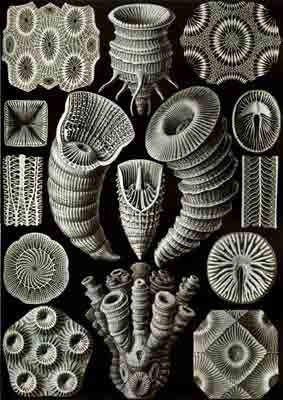Slipper Horn Fossil Sea Solitary Coral 9.2 gr - mm 33 x 31 x 11 Calceola sandalina Benthic Invertebrata Sessile Coelenterata Cnidaria Anthozoa Rugose Tetracorals Prehistoric Extinct Paleozoic Devonian Collecting Paleontology Museum.
Pleasant fossil find of Tetracorallia Rugosa Cystiphyllida Goniophyllidae from the Middle Devonian of Morocco, representative collectible specimen of good quality and well preserved, with clear details of the slipper or horn-shaped Coralite structure of the calcite Skeleton.
Only a piece, as in photo.
This genus of coral with its characteristic shape belongs to the Rugosa order, characteristic of the Paleozoic and now extinct, also known as Tetracorallia.
It is a solitary coral, with
coralite typically shaped like a
slipper, similar to the end of an oriental sandal.
The morphology of a fossil often provides clues to its lifestyle. In this case, the corals lie flat on the seabed (sole lowered), with the apex (tip of the shoe) facing the current. The particular shape represents the growth of the animal: the
exoskeleton expanded as the animal grew.
This type of coral had a small lid called an
operculum that closed the cavity with a hinge. This semicircular opercular structure may have had a protective function, but it may also have been used to move coral on the seabed. This type of movement not only prevented the coral from remaining buried in the sediments, but also allowed it to find the best position for feeding and eliminating waste products.
This genus is an important stratigraphic
fossli-guide that lived in the lower and middle Devonian, in particular C. sandalina is typical of the
Eifelian, a plane whose name derives from the area in which this specimen was discovered.
Sin.
Anomia sandalium (Linnaeus).
Rugosa (Milne Edwards & Haime, 1850), also called
Tetracorallia, are an extinct order of solitary and colonial corals that were abundant in Middle Ordovician to Late Permian seas. Solitary rugosans (e.g., Caninia, Lophophyllidium, Neozaphrentis,

Streptelasma) are often referred to as
horn corals because of a unique horn-shaped chamber with a
wrinkled, or rugose, wall. Some
solitary rugosans reached nearly a meter in length. However, some species of rugose corals could form large
colonies (e.g., Lithostrotion). When
radiating septa were present, they were usually in multiples of four, hence
Tetracorallia in contrast to
modern Hexacorallia, colonial polyps generally with
sixfold symmetry.
Rugose corals have a skeleton made of
calcite that is often fossilized. Like modern corals (Scleractinia), rugose corals were invariably
benthic, living on the sea floor or in a reef-framework. Some symbiotic rugose corals were endobionts of Stromatoporoidea, especially in the Silurian period. Although there is no direct proof, it is inferred that these Palaeozoic corals possessed stinging cells to capture prey. They also had tentacles to help them catch prey. Technically they were carnivores, but prey-size was so small they are often referred to as microcarnivores.



